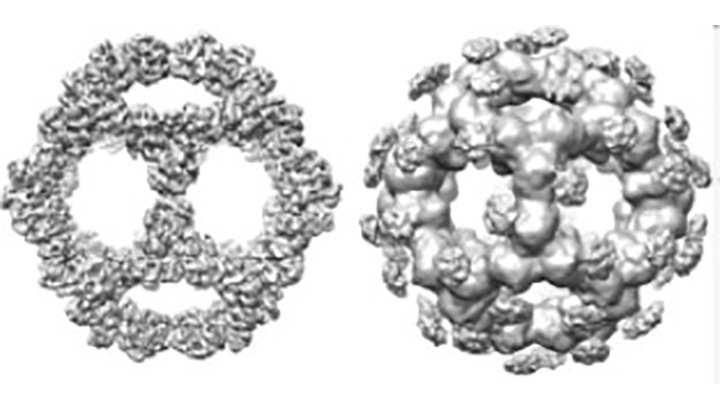Novel Scaffold for Labeling and Isolation of B- and T-Cells
ID# 2018-4808
Technology Summary
A novel scaffold has been created composed of 60 self-assembling protein subunits, rigid, heat stable, and can be functionalized via modification to the N-and C- term of each subunit. The inventors generated two novel variations of the cage – SpyCage-Green/Red/Blue and AviCage-Green/Red/Blue. SpyCage includes a SpyCatcher capture domain at subunit N-term, allowing for capture of any target labelled with the widely used SpyTag. The N-term also includes a flexible linker to prevent any steric hinderance in binding. A fluorescent protein, either green, blue, or red, is fused to the C-term of the subunit.
Application & Market Utility
This tetramer creates a fluorescent signal 10x brighter than the best tetramer currently available. The enhanced fluorescent signal is expected to facilitate efficient fluorescence-activated cell sorting (FACS). Initial results demonstrate that AviCage outperforms currently available tetramers in the specific isolation of B-cells reactive to an antigen of interest. Downstream use of isolated B-cells may include the sequencing of the heavy chain and light chain coding sequences for the production of recombinant antibodies and the creation of novel hybridoma lines.
Next Steps
The inventors expect that T-cells may be similarly isolated using MCH-1 bound SpyCages/AviCages. Seeking research collaboration and licensing opportunities.

